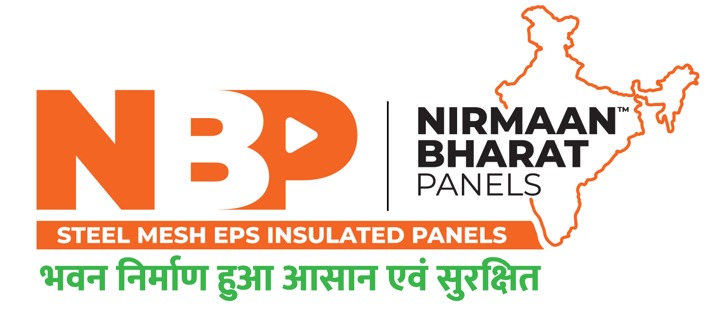In recent years, the construction industry has seen a major shift towards more sustainable, cost-effective, and time-efficient building practices. One such practice is the use of prefabricated panels, and among these, EPS (Expanded Polystyrene) panels have gained significant traction. EPS panels, commonly used in prefabricated buildings, are revolutionizing the way we construct residential, commercial, and industrial structures. In this blog, we will delve deep into the benefits and applications of EPS panels in prefabricated structures, and explore why they are quickly becoming a preferred choice in modern construction.
Table of Contents
ToggleWhat are EPS Panels?
EPS panels are made from expanded polystyrene, a lightweight, rigid foam material that is widely used in a variety of applications, including insulation and construction. In the context of prefabricated buildings, EPS panels are used as wall, roof, and floor panels that are pre-manufactured in a controlled environment before being transported to the construction site. These panels are typically lightweight, easy to handle, and offer excellent thermal and acoustic insulation properties.
How EPS Panels Work in Prefabricated Buildings
EPS panels in prefabricated buildings are typically made with an inner core of expanded polystyrene foam, sandwiched between two layers of materials, such as concrete, steel, or gypsum. This combination creates a durable and insulating material that is ideal for use in a variety of construction applications. The panels are manufactured in a factory setting and are then transported to the construction site, where they are assembled to form the structural framework of the building.
The primary benefit of using EPS panels in prefabricated buildings is that it allows for faster and more efficient construction. Since the panels are pre-manufactured, there is little to no on-site construction time required for certain elements of the building. This reduces labour costs and minimizes construction time, which is particularly beneficial for projects with tight deadlines.
Benefits of EPS Panels in Prefabricated Buildings
1. Superior Insulation Properties
One of the most significant advantages of EPS panels is their excellent insulation properties. The expanded polystyrene foam used in the panels has a low thermal conductivity, meaning it is highly effective at preventing heat transfer. This makes EPS panels ideal for maintaining comfortable indoor temperatures, as they help keep buildings cool in the summer and warm in the winter. The superior insulation properties of EPS panels also contribute to energy savings, as buildings require less heating and cooling, reducing the overall energy consumption.
2. Lightweight and Easy to Handle
EPS panels are incredibly lightweight compared to traditional building materials like concrete and brick. Their lightweight nature facilitates convenient transportation, handling, and installation. The lightweight nature of the panels also reduces the load on the building’s foundation, which can result in cost savings during the construction process. Since the panels are easy to handle, the installation process is quicker, reducing overall construction time.
3. Cost-Effective
The use of EPS panels in prefabricated buildings can lead to significant cost savings. The lightweight nature of the panels reduces transportation and handling costs. Additionally, the ease of installation and the speed at which the panels can be assembled on-site helps reduce labour costs. Furthermore, the excellent insulation properties of EPS panels lead to reduced energy consumption, which results in long-term cost savings for the building owner.
4. Environmental Sustainability
EPS panels are environmentally friendly in several ways. Firstly, the production of EPS panels requires less energy compared to traditional building materials like concrete or steel. Secondly, the superior insulation properties of EPS panels reduce the need for heating and cooling, which helps minimize a building’s overall carbon footprint. Additionally, EPS is a recyclable material, which means that the panels can be reused or recycled at the end of their lifespan, further contributing to sustainability.
5. High Strength and Durability
Although they are lightweight, EPS panels possess remarkable strength and durability. The foam core provides excellent impact resistance, and the outer layers of the panels offer further protection against physical damage. EPS panels are also resistant to moisture, mold, and pests, making them a reliable and long-lasting choice for building construction.
6. Sound Insulation
EPS panels provide excellent sound insulation, making them ideal for buildings that require noise control, such as offices, schools, hospitals, and residential apartments. The foam core of EPS panels helps to reduce sound transmission, providing a quieter and more comfortable indoor environment.
7. Fire Resistance
EPS panels are treated with fire retardants to ensure they meet fire safety standards. While EPS is flammable, the fire retardants used in the panels help delay the spread of fire, improving the overall fire safety of the building. This makes EPS panels suitable for a wide range of construction applications, including multi-story buildings and industrial structures.
Applications of EPS Panels in Prefabricated Buildings
EPS panels are versatile and can be used in a wide range of prefabricated building applications. Some of the most common applications include:
1. Residential Buildings
EPS panels are increasingly being used in the construction of residential buildings, including single-family homes, townhouses, and apartment complexes. The excellent insulation properties of EPS panels help maintain comfortable indoor temperatures, reducing the need for air conditioning or heating. This makes them an energy-efficient and cost-effective choice for homeowners.
2. Commercial Buildings
EPS panels are also widely used in commercial construction, particularly in office buildings, shopping centres, and retail spaces. The panels provide excellent sound insulation, which is essential for creating a productive and comfortable work environment. Additionally, the speed and efficiency of construction using EPS panels make them an attractive option for commercial developers looking to complete projects on time and within budget.
3. Industrial Structures
In industrial construction, EPS panels are used for warehouses, factories, and other large-scale structures. The lightweight nature of the panels makes them easy to transport and install, while their durability ensures that they can withstand the demands of industrial environments. EPS panels also provide excellent thermal and sound insulation, which is important in maintaining a comfortable and safe working environment.
4. Infrastructure Projects
EPS panels are increasingly being used in infrastructure projects such as bridges, tunnels, and other large public works. The lightweight and durable nature of the panels makes them ideal for use in these challenging applications. Additionally, EPS panels can be easily customized to meet the specific requirements of each project.
5. Modular and Prefabricated Housing
Modular homes and prefabricated buildings are becoming increasingly popular as an affordable and efficient housing solution. EPS panels are ideal for these types of structures because they can be pre-manufactured in a factory and then assembled on-site. This reduces construction time and costs, making it an attractive option for developers and homeowners alike.
EPS Panels vs. Traditional Construction Methods
Compared to traditional construction methods, the use of EPS panels in prefabricated buildings offers several advantages. Traditional methods often require the use of heavy materials like concrete, brick, or steel, which are more expensive and time-consuming to work with. On the other hand, EPS panels are lightweight, easy to handle, and quick to install, which results in lower labour costs and faster project completion.
Additionally, the superior insulation properties of EPS panels make them more energy-efficient than traditional construction methods. This not only reduces heating and cooling costs but also contributes to a building’s overall environmental sustainability.
Conclusion
EPS panels in prefabricated buildings represent the future of construction. With their numerous benefits, including superior insulation, cost-effectiveness, environmental sustainability, and high strength, EPS panels are transforming the construction industry. Whether for residential, commercial, or industrial buildings, EPS panels offer a versatile and efficient solution that can help reduce construction time, costs, and energy consumption. As the demand for sustainable and efficient building practices continues to grow, EPS panels are set to play a key role in the future of construction.
FAQs
Q1. What are EPS panels made of?
Ans: EPS panels are made of expanded polystyrene foam, which is a lightweight, rigid foam material. The foam core is sandwiched between two layers of materials such as concrete, steel, or gypsum for durability.
Q2. Can EPS panels be used for all types of Prefabricated buildings?
Ans: Yes, EPS panels can be used for residential, commercial, industrial, and infrastructure projects. They are versatile and suitable for a wide range of applications.
Q3. Are EPS panels environmentally friendly?
Ans: Yes, EPS panels are environmentally friendly as they require less energy to produce compared to traditional building materials. Additionally, their superior insulation properties help reduce energy consumption, and they are recyclable.
Q4. How do EPS panels perform in terms of fire safety?
Ans: EPS panels are treated with fire retardants to ensure they meet fire safety standards. While the material itself is flammable, the fire retardants help delay the spread of fire.
Q5. Are EPS panels cost-effective?
Ans: Yes, EPS panels are cost-effective due to their lightweight nature, which reduces transportation costs. They also lower labour costs because they are easy to install and can speed up the construction process.


